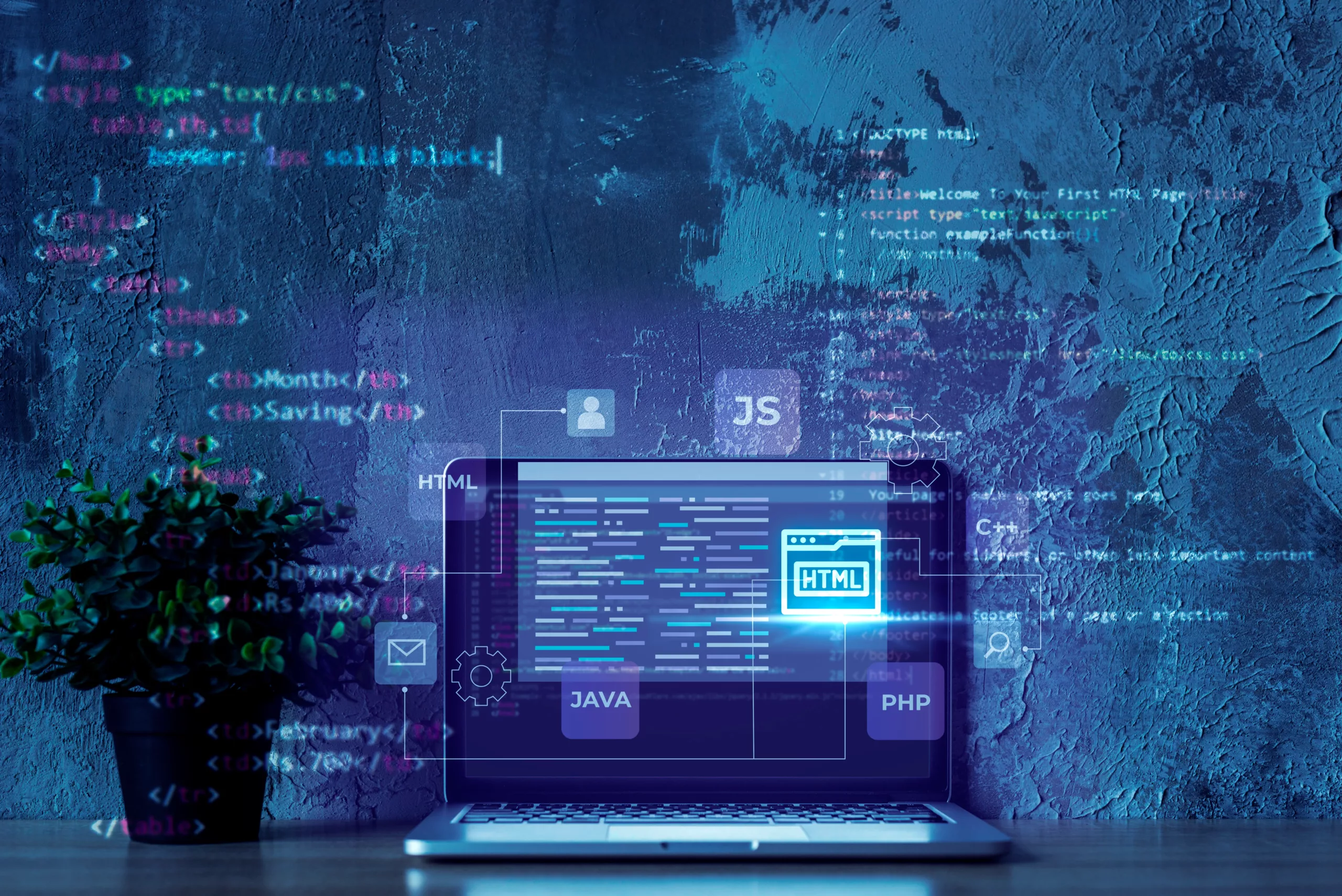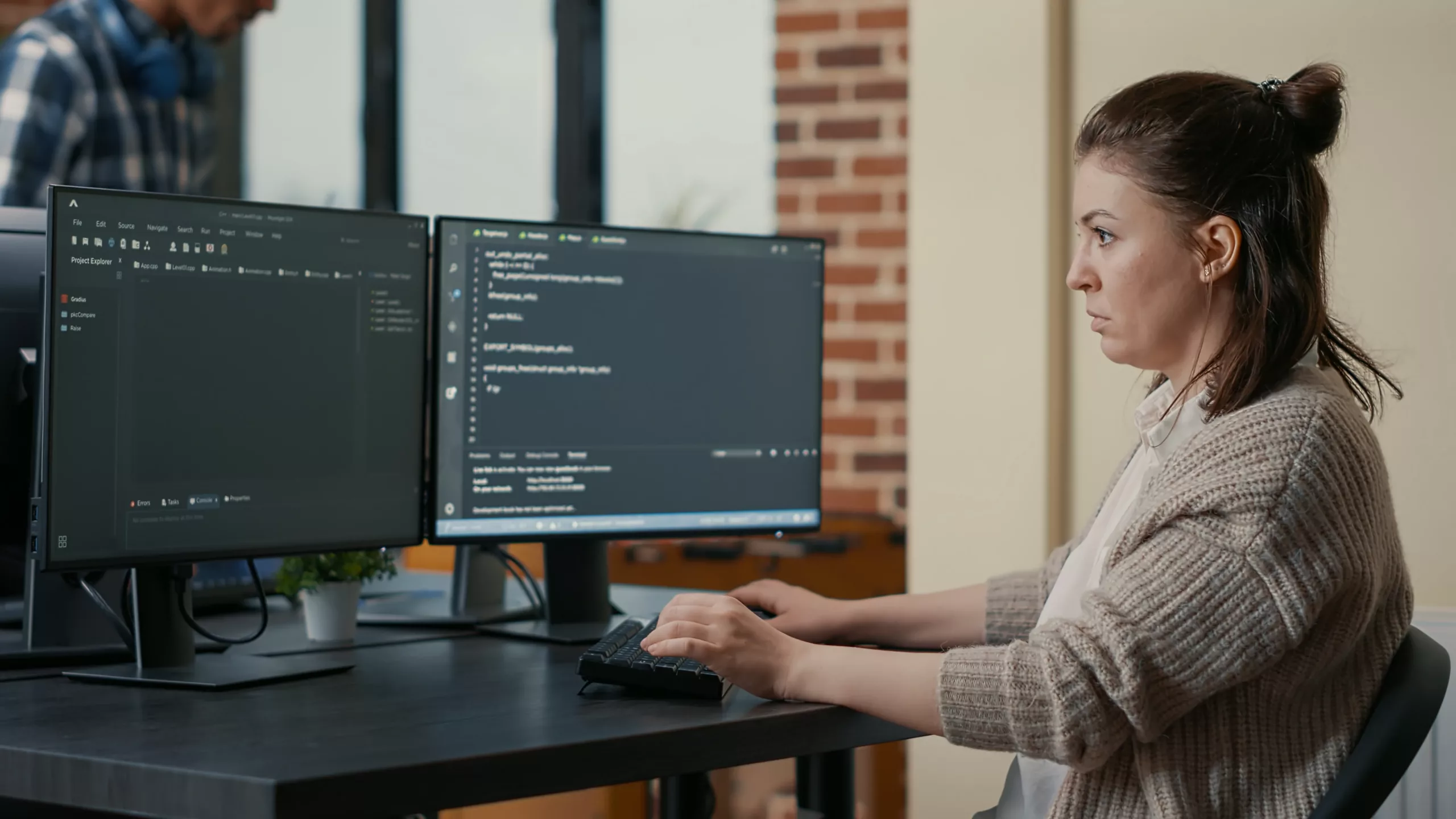So, According to a recent survey report, companies with application experience an astounding 825% higher initial public offering (IPO) compared to those without it. If you’re a small startup or SMB aiming to skyrocket your revenue, it’s imperative to build and launch your own app promptly.
But where do you begin? Hiring or building real-time applications with full stack developers might seem like a daunting task. That’s where we come in. In this article, we’ll not only highlight the significant benefits of building real-time applications, but we’ll also guide you through a comprehensive process to help you hire a full stack developer.
Stay with us to explore the extraordinary benefits and uncover a step-by-step guide that will empower you to make informed decisions.
7 Exclusive Benefits of Building Real-Time Applications with Full Stack Developers

Building real-time applications with full-stack developers offers several benefits that contribute to the success and effectiveness of your application. Here are some key advantages:
Seamless Integration
Full-stack developers possess diversified skills, including front-end and back-end development. This allows them to seamlessly integrate different components of your application, ensuring smooth communication between the client side and server side.
By understanding the intricacies of both ends, full stack developers establish efficient data flows, implement real-time updates, and ensure a cohesive user experience. They effectively bridge the gap between the user interface and the underlying infrastructure, resulting in a seamless integration of features and functionalities.
Faster Development Process
Having expertise spanning both front-end and back-end technologies, full-stack developers eliminate the need for coordination between separate teams. They reduce dependencies and communication overhead. This streamlined approach enables faster development cycles and shorter time-to-market for real-time applications.
By having a single developer proficient in both areas, you can save time and resources that would have been spent on aligning separate teams’ schedules. Handling multiple aspects of development not only speeds up the process but also facilitates quick iterations and adjustments based on user feedback.
Cost-Effectiveness
By having one developer proficient in both areas, you can avoid the expense of hiring multiple specialists and managing separate teams. Additionally, full-stack developers are often well-versed in various frameworks, libraries, and technologies, reducing the need for additional resources or external consultants.
Through their broad skill set, they adapt to changing project requirements and incorporate emerging technologies, minimizing the need for external expertise and costly retraining efforts.
Flexibility and Adaptability
Full-stack developers are flexible and adaptable to changing project requirements. With their diverse skill set, they quickly learn and implement new technologies or frameworks, enabling them to keep up with the evolving needs of real-time application development. Whether it’s integrating the latest real-time communication protocols or leveraging emerging front-end frameworks, they easily adapt and incorporate advancements into your application.
Efficient Bug Fixing and Maintenance
Handling both front-end and back-end aspects, full-stack developers quickly identify and resolve issues, minimizing downtime and ensuring a smoother user experience. They have a deep understanding of the web application architecture. So, they trace problems across different layers and make necessary adjustments or fixes promptly.
Well-versed in best practices for application security, performance optimization, and scalability, they identify potential areas of improvement and implement necessary updates or enhancements to keep your application running smoothly. This allows for efficient maintenance and ensures that the real-time application continues to deliver optimal performance to your users.
Improved Performance and Responsiveness
Real-time applications require high performance and responsiveness to deliver instantaneous updates and provide a seamless user experience. Full stack developers optimize performance for quick data processing, smooth data updates, and fast response times. They leverage caching mechanisms, implement efficient algorithms, and fine-tune database queries to ensure real-time data retrieval and processing.
Real-time data updates, instant notifications, and smooth communication between the client and server are essential for real-time applications. Full-stack developers ensure that these features work seamlessly, providing users with real-time information and enhancing their satisfaction and engagement with your application.
Seamless Scaling
Scaling the application to accommodate increasing traffic is a critical factor for success. Full stack developers implement scalable architectures and employ techniques like caching, load balancing, and optimized database management to ensure your application can handle the growing traffic load.
They architect the system to handle high volumes of concurrent connections, distribute the load efficiently, and implement mechanisms for horizontal scaling when necessary. This ensures that your real-time application remains responsive and performs optimally, even as user demands increase.
9 Steps to Build Real-Time Applications with Full Stack Developers

Various stages are involved to build a full stack web application. Below, we outline the step-by-step process of developing a real-time application, highlighting the key activities and tasks that are typically undertaken on a day-by-day basis.
Step 01: Project Planning and Requirement Gathering
- Define the project scope, objectives, and target audience.
- Conduct meetings with stakeholders to gather requirements and understand the desired functionality of your real-time application.
- Create a project plan that outlines the timeline, resources, and deliverables.
Step 02: Technology Stack Selection and Infrastructure Setup
- Research and evaluate different technology stacks suitable for your application development.
- Choose front-end and back-end frameworks, libraries, and databases based on your project requirements and team expertise.
- Set up the development environment, including installing necessary tools and frameworks.
Step 03: Database Design and Back-End Development
- Design the database structure, including tables, relationships, and data models, considering the real-time nature of your application.
- Develop the back-end components, including server-side logic and APIs, to handle real-time data processing and communication with your application’s front end.
Step 04: Front-End Development and User Interface Design
- Design the user interface (UI) and user experience (UX) of your application, ensuring a visually appealing and intuitive interface.
- Develop the front-end components using appropriate frameworks and libraries, integrating real-time features and ensuring responsiveness across devices.
Step 05: Integration of Real-Time Functionality
- Integrate WebSockets or other real-time communication protocols to enable instant updates and real-time data exchange between the client and server.
- Implement real-time analytics and monitoring systems to gather insights into your user behavior and application performance.
Step 06: Testing and Bug Fixing
- Conduct comprehensive, functional, performance, and compatibility testing across different devices and browsers.
- Identify and fix bugs, issues, or inconsistencies discovered during testing.
- Optimize your application’s performance and responsiveness.
Step 07: Deployment and Continuous Integration
- Prepare your application for deployment to a production environment.
- Set up a continuous integration and deployment pipeline to automate the build and release processes.
- Deploy your real-time application to a server or cloud platform, ensuring proper configuration and scalability.
Step 08: User Acceptance Testing and Feedback
- Conduct user acceptance testing to gather feedback from target users.
- Analyze user feedback and make necessary adjustments or enhancements to improve your application’s user experience and functionality.
Step 09: Final Refinements and Documentation
- Fine-tune your application based on user feedback and finalize the remaining design or functional changes.
- Document your application’s architecture, functionality, and key components for future reference and maintenance.
The process can vary based on the complexity of your real-time application, team size, and other factors. Your development process may also involve iterations and revisions throughout the entire duration to ensure a successful outcome.
How to Hire a Full Stack Developer for Your Real-Time Applications

Finding the right full stack developer for your real-time applications is crucial to ensure a successful development process and a high-quality end product. Here are some steps to help you find and hire dedicated full stack developers.
Define Your Project Requirements
Clearly define your project requirements before searching for a full-stack developer. This includes the technologies, frameworks, and specific skills you require. Determine the level of expertise needed in front-end and back-end development and specific experience with real-time applications.
Evaluate Technical Skills
When assessing the potential to hire remote full-stack developers, evaluate one’s technical skills in both front-end and back-end technologies. Look for expertise in relevant frameworks, libraries, databases, and real-time communication protocols. Consider their proficiency in JavaScript, CSS, HTML, front-end frameworks (such as React or Angular), back-end frameworks (like Node.js or Django), and database management systems.
Assess Real-Time Application Experience
Look for full stack developers with prior experience working on real-time applications. And, assess their real-time communication techniques, such as WebSockets or server-sent events. Experience with optimizing performance, handling data synchronization, and managing real-time data flows will be valuable.
Review Portfolios and Projects
Request portfolios or examples of previous projects before you hire a full stack developer. Evaluate the quality and functionality of their past work, paying attention to real-time features, user interfaces, and scalability. This will give you an idea of their capabilities and ability to deliver the quality and functionality you seek.
Check References and Reviews
Reach out to references provided by the full stack developers or conduct online research to gather feedback from their previous clients or colleagues. So, you can have insights into their work ethic, communication skills, problem-solving abilities, and professionalism.
Assess Problem-Solving and Collaboration Skills
Evaluate your full stack developer’s ability to understand complex requirements, propose solutions, and work effectively within a team. Look for developers who effectively communicate ideas, ask relevant questions, and adapt to changing project needs.
Cut Costs by 30% – Hire a Full Stack Developer Through VinnCorp
Looking to optimize your budget without compromising on quality? VinnCorp provides a cost-effective solution and helps you hire a full stack developer who delivers exceptional results while reducing your development costs by 30%.
Our extensive talent pool and expertise in full stack development ensure streamlined processes, efficient resource allocation, and top-notch project management. Contact us today to discuss your requirements and get started on building your success story.



